Is Pickleball Easier Than Tennis? Find Out Here!
In recent years, pickleball has surged in popularity, emerging as a favorite pastime for individuals of all ages. Marked by its engaging gameplay and relatively simple rules, many wonder if pickleball is indeed easier than tennis, especially for beginners. This is not merely a question of personal preference; it delves into various aspects of each sport, from equipment and gameplay dynamics to the physical demands placed on the body. This comprehensive exploration of the differences and similarities between pickleball and tennis will offer valuable insights for those contemplating which sport aligns best with their lifestyle. Whether you’re new to racquet sports or a seasoned player, understanding the factors influencing the ease of play can help inform your decision about which sport might be right for you.
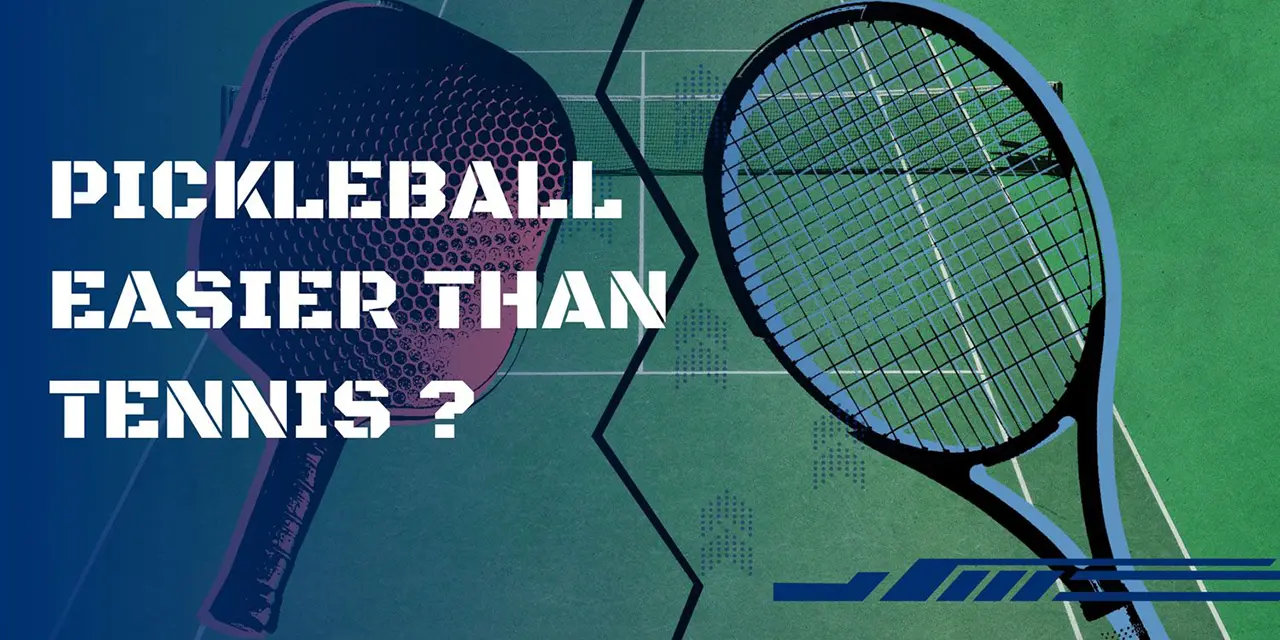
Factors Influencing Ease of Play
Several factors can influence how easy or accessible a sport is for players, particularly newcomers. In the case of pickleball and tennis, these factors include court size, equipment differences, gameplay dynamics, and the physical demands of each sport. When evaluating the ease of play, it’s essential to also consider how each of these elements contributes to the overall experience for players of varying skill levels and physical abilities.
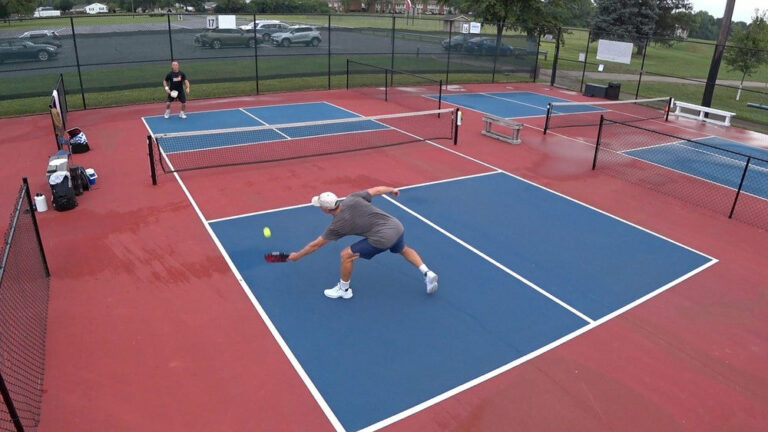
Court Size Comparisons
The dimensions of the court play a significant role in determining the difficulty of both pickleball and tennis. A standard pickleball court measures 20 feet wide by 44 feet long, regardless of whether it is used for singles or doubles play. This compact size promotes quick and engaging rallies, allowing for more interaction between players and requiring less movement across the court.
In contrast, a standard tennis court is considerably larger, measuring 36 feet wide and 78 feet long for doubles. For singles matches, it narrows to 27 feet wide. The much larger area in tennis demands greater mobility and physical endurance, which can be daunting for beginners. The difference in court size significantly affects gameplay, with the smaller dimensions of a pickleball court resulting in a style of play that emphasizes strategy and finesse over sheer power.
| Characteristic | Pickleball Court | Tennis Court |
|---|---|---|
| Width | 20 feet | 36 feet (doubles), 27 feet (singles) |
| Length | 44 feet | 78 feet |
| Total Area | 880 square feet | 2,808 square feet |
| Required Mobility | Less | More |
This smaller area contributes to a less physically demanding game of pickleball, making it inviting for those who might struggle with the extensive running typically required in tennis. Additionally, the lower net height in pickleball further facilitates gameplay, allowing for easier volleys and strategic shots, especially for newcomers still honing their skills.
Equipment Differences
Diving deeper into the equipment differences between the two sports, we can see that the type of racquet and ball used in pickleball and tennis greatly influences how players engage with the game.
- Paddles vs. Rackets:
- Pickleball paddles are solid and typically made from composite materials, wood, or graphite, weighing around 7.5 ounces. Their flat surface allows for quick returns, requiring precise placement to hit effectively.
- Tennis rackets, however, are larger and heavier, weighing between 10 to 11 ounces, and are strung with nylon or polyester strings, which provide better control when generating spin and power.
- Ball Composition:
- Pickleball balls are perforated plastic, with a diameter of about 2.9 inches and weighing between 0.78 to 0.93 ounces. The holes in the ball significantly affect its aerodynamics, causing it to move slower than its tennis counterpart.
- Tennis balls are felt-covered rubber with a diameter of approximately 2.7 inches and weighing between 1.98 to 2.1 ounces, making them heavier and faster.
- Court Size and Net Height:
- The combination of a smaller court size and a lower net height in pickleball significantly reduces the physical strain on players. Many find this equipment easier to handle than that required in tennis.
Gameplay Dynamics
Analyzing the gameplay dynamics further illustrates why many perceive pickleball as an easier sport. While both games have unique strategies and tactics, their playing styles are quite different owing to court and equipment specifications.
- Scoring Systems:
- In pickleball, only the serving team can score points. Games are usually played to 11, 15, or 21 points with a requirement to win by at least two points. This method of scoring may simplify gameplay for newcomers.
- In tennis, players score points irrespective of who is serving, employing a more complex scoring method that might intimidate beginners.
- Serve Technique:
- Pickleball serves must be executed underhand, which is often less intimidating for newcomers compared to the overhand serves typically used in tennis that require more technique and strength.
- Movement and Strategy:
- Pickleball often fosters slower-paced rallies due to its smaller court where the emphasis is on strategy and placement rather than sheer power and physical prowess. Tennis, however, typically involves longer rallies that rely on endurance and speed, requiring players to engage their entire bodies.
The dynamics of gameplay highlight the differences in skill sets required and the energy expenditure needed for each sport, solidifying why pickleball is often considered easier to approach for beginners.
Physical Demands
When engaging with any sport, understanding the physical demands and strain on the body is crucial, particularly regarding long-term health and enjoyment. Both pickleball and tennis come with their respective demands, but they differ significantly in terms of impact on players’ joints and overall physical exertion levels.
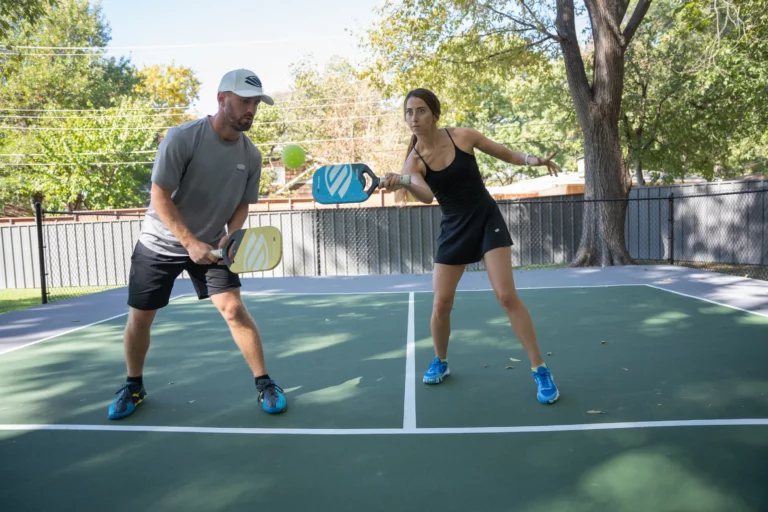
- Court Size and Movement:
- As mentioned, pickleball’s smaller court size (44 feet by 20 feet) results in less running, leading to fewer abrupt stops and decreases in the overall physical exertion compared to tennis (78 feet by 36 feet). This feature makes pickleball less taxing on the joints and more suitable for players with mobility issues.
- Nature of the Ball:
- The weighted nature of pickleball, compared to that of a tennis ball, allows for lighter swings and easier exchanges, further reducing the physical demands on players. Tennis involves heavier balls that lead to fatigue over longer periods of play.
- Gameplay Dynamics:
- The strategic movements in pickleball tend to allow players to engage in shorter bursts of activity, which minimizes the risk of injuries commonly associated with intense, prolonged sessions observed in tennis.
Impact on Joint Health
One of the most crucial debates surrounding athletic activities is the impact on joint health. Many players often face challenges associated with joint strain, particularly in sports that demand rapid movements and frequent changes in direction.
- Joint Strain:
- The smaller court and less aggressive gameplay of pickleball often means less strain on the knees, hips, and ankles, encouraging better joint health, especially for older adults or those with pre-existing conditions.
- Conversely, tennis players frequently endure more aggressive movements along a larger court, which can lead to conditions like tennis elbow or chronic knee issues due to the repetitive nature of the sport.
- Start and Skill Levels:
- With pickleball being more accessible and less intense, players in various age groups can enjoy the benefits of physical activity without worrying about the higher risks often associated with tennis.
- Injury Prevention:
- Players seeking joint-friendly sports may gravitate towards pickleball due to its inclusive nature and reduced possibility of injury during play.
In conclusion, pickleball is frequently regarded as easier to learn and play, particularly for individuals with concerns regarding their joint health. The sport’s accessibility fosters an inviting environment for broader participation and enjoyment, making it an ideal choice for those seeking less physically demanding yet rewarding exercise.
Cardiovascular Intensity
When assessing cardiovascular intensity, which correlates with overall fitness benefits, it’s essential to recognize the contrasting demands each sport imposes on players. Tennis is often viewed as more physically taxing due to its larger playing area and the energy required to cover it. The intense pace of play commonly involved in tennis matches results in a high-calorie burn and aerobic benefits over time.
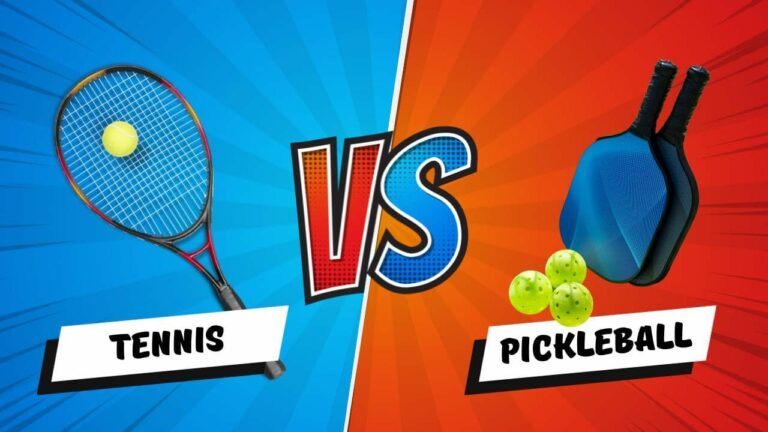
Conversely, pickleball offers a solid workout while generally registering lower cardiovascular intensity due to its smaller court size. While players still experience an increase in heart rate, the gameplay includes shorter bursts of activity and less overall running. Consequently, people seeking moderate aerobic activity that is less strenuous may find pickleball to be a more suitable choice.
Speed and Agility Requirements
The requirement for speed and agility presents another key differentiator between pickleball and tennis. While both sports demand quick movements, the level of intense agility required is typically much higher in tennis.
- Tennis Players:
- Must demonstrate explosive movements to sprint quickly across the court, requiring fast-twitch muscle development and overall body endurance. Much of the gameplay centers around agility, as players move to cover extensive distances.
- Pickleball Players:
- Engage in more controlled movements with reduced distance. The gameplay allows players to focus on placement and strategy rather than sheer speed, making pickleball accessible to those who may have limited mobility or stamina.
Overall, both sports present engaging options for athletic activity; however, the less demanding nature of pickleball concerning speed and agility requirements often makes it easier for beginners or those with physical limitations to participate comfortably.
Learning Curve and Accessibility
Understanding the learning curve of each sport is vital when contemplating its accessibility for new players. Both pickleball and tennis present opportunities for skill development, but the experiences associated with learning each sport are different.
In pickleball, the rules are relatively simple, allowing players to understand the game quickly. Beginners can quickly pick up basic techniques such as underhand serves and strategic shot placements without a prolonged period of training. This ease of learning promotes confidence and enjoyment, making it appealing for individuals interested in starting a racquet sport.
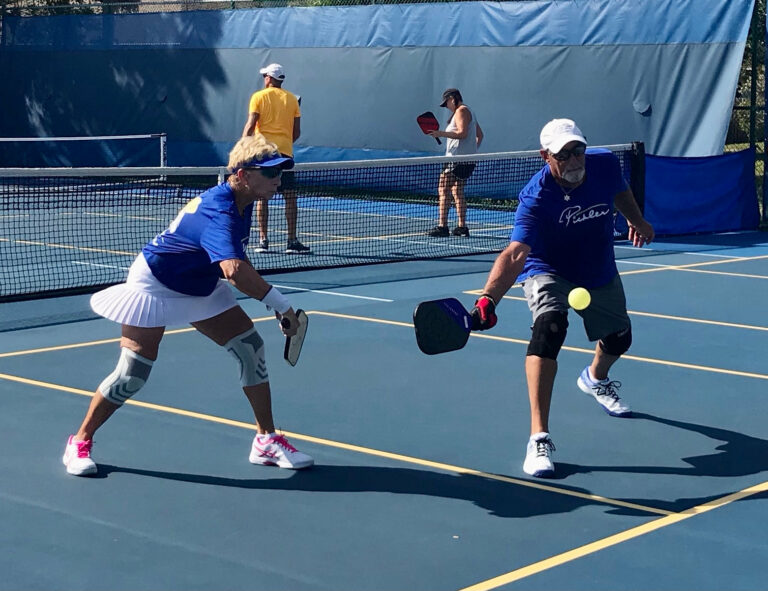
In contrast, tennis is marked by a steeper learning curve due to more complex rules and techniques. Mastering various strokes takes time and practice, which could discourage new players. The intricacies involved could lead some to feel overwhelmed, especially if they are competing against more experienced players.
Rule Complexity
One of the most significant differences between pickleball and tennis is the complexity of their rules.
- Pickleball Rules:
- The game’s rules are straightforward, often focusing on the serving team earning points and emphasizing the double-bounce rule that promotes engagement and strategy between players.
- Tennis Rules:
- Involve unique terminology and scoring systems, such as 15, 30, 40, advantage, and deuce, which can be bewildering for newcomers attempting to navigate their first matches. The learning curve can present challenges that result in players feeling less confident in their abilities.
Skill Development
When evaluating skill development opportunities in either sport, both have unique advantages.
- Pickleball:
- Offers players a chance to develop their skills without the rigorous training needed in tennis. The shorter court length and slower gameplay facilitate quicker improvements, allowing players to begin enjoying their experience sooner.
- Tennis:
- Demands a higher level of commitment to skill mastery, with a focus on diverse techniques. While this can yield greater long-term physical and strategic benefits, the initial experience may be difficult for beginners.
In summary, the easier learnability and greater accessibility of pickleball often lead to increased enjoyment for those starting their journey in racquet sports.
Age and Fitness Considerations
One of the most appealing aspects of pickleball is its inclusivity, particularly with players spanning various ages and fitness levels. The sport’s adaptable nature and community-driven environment invite individuals who may not have participated in vigorous athletic activities in the past.
- Pickleball is particularly attractive for older adults, as it requires less extensive physical ability compared to tennis. The different rules and smaller court size accommodate those who may struggle with mobility or stamina while still providing ample social engagement.
- Tennis, while still accommodating for many players, often demands a certain level of fitness and agility that could make it less approachable for some, particularly among older adults.
Overall, pickleball’s design prioritizes enjoyable experiences for all players, irrespective of background while providing a supportive atmosphere for fitness and social interaction.
Social Interactions and Environment
The social aspect of both sports plays a critical role in their appeal.
Community Aspects of Pickleball
Pickleball promotes inclusivity and applies a community-centered approach to engagement. The sport fosters the development of friendships and camaraderie among players of varying skill levels. Community-driven events and activities underscore the supportive nature of the game.
Many communities are organizing social events around pickleball, from casual meetups to organized tournaments, promoting connections among participants. The shared experiences in friendly settings enhance feelings of belonging, making it a rewarding avenue for socialization.
Social Engagement in Tennis
Tennis, while providing many competitive opportunities, is often associated with organized clubs that could be considered exclusive in terms of membership requirements or competition level.
Clubs typically focus on structured practices, league play, and tournaments, thus contributing to the development of social interactions among members. However, these interactions could be less frequent than those found in pickleball environments due to the emphasis on competition.
Inclusivity of Different Skill Levels
- Pickleball is designed to engage all players, including those less experienced or newer to racquet sports. With easy-to-understand rules and approachable gameplay, players of various skill levels can feel comfortable participating and enjoying themselves.
- Tennis can pose challenges for newcomers due to the significant skill differences that often require more extensive training; thus, the environment may not be as inclusive for players of varying abilities.
In essence, both sports foster social engagement, but the community aspects of pickleball stand out, creating lasting friendships and connections rooted in the shared enjoyment of the game.
Strategies and Techniques
Strategic gameplay and the application of specific techniques in both pickleball and tennis contribute to how players approach their matches.
Serving Styles
When it comes to serving styles, the differences between pickleball and tennis are significant:
- Pickleball Serving Techniques:
- Requires an underhand serve, emphasizing control and placement. Different strategies may involve targeting particular areas of the opponent’s court or varying spin to throw off the return.
- Tennis Serving Techniques:
- Focuses on powerful overhead serves, where players can employ a variety of spins and placements to challenge their opponents. This approach actively seeks to gain an immediate advantage in the rally.
The differences in serving styles influence how players will engage with their opponents, highlighting techniques prominent in both sports.
Shot Variety
Analyzing the shot variety reveals yet another distinction:
- Pickleball:
- Involves shots such as dinks, drop shots, and volleys, focusing on placement and finesse rather than outright power. The strategic use of the non-volley zone adds a tactical dimension players must navigate carefully.
- Tennis:
- Engages a broader array of shots, including powerful groundstrokes, slice shots, volleys, and overhead smashes, emphasizing the importance of power and precision throughout rallies.
Tactical Gameplay
The gameplay tactics employed in each sport often reflect their unique attributes:
- Pickleball depends heavily on positioning and communication, especially in doubles play. Players engage in more strategic thinking to control the court and employ techniques to outmaneuver opponents.
- Tennis strategies often integrate physical stamina, with players pushing for control from the baseline and using various shots to exploit opponents’ weaknesses.
In conclusion, while both sports offer engaging strategies and techniques, the approach to gameplay differs significantly due to fundamental differences in court sizes, equipment, and play styles. This variation further solidifies pickleball as a more approachable sport for those new to racquet sports.
Health Benefits
When discussing the physical activity associated with both sports, it’s necessary to highlight the health benefits. Engaging in either pickleball or tennis leads to various improvements in overall health.
Caloric Burn Rates
Understanding the differences in caloric expenditure provides insight into how each sport contributes to fitness improvements:
- Tennis, particularly singles play, can result in high-calorie burns, with estimates suggesting that an individual weighing 150 pounds might burn around 414 calories per hour, while those weighing 200 pounds may expend 524 calories per hour.
- Pickleball, although less intense, still offers a great workout. Casual play may lead to the burning of about 250 calories in 30 minutes, translating to approximately 500 calories per hour for more engaged play. This accessibility allows individuals who may be new to exercise to integrate fitness into their lives more easily.
Mental and Emotional Health
Both sports also contribute positively to mental and emotional health.
- Pickleball:
- Engages participants socially, reducing feelings of isolation and increasing overall life satisfaction. The friendly atmosphere in pickleball often leads to meaningful interactions, fostering connections that can have mood-boosting effects.
- Tennis:
- Often involves competitive environments that can equally promote social interactions or stress, depending on the player’s approach. Positive engagement with clubs may enhance player’s mental well-being.
Long-Term Fitness Outcomes
Long-term participation in sports like pickleball or tennis translates into lasting benefits. Regular engagement not only improves cardiovascular fitness but can also help sustain weight management, maintain muscle strength, and enhance flexibility.
- Pickleball holds an advantage due to its lower impact nature, appealing to older adults or those with mobility concerns without compromising their ability to stay engaged and physically active.
- Tennis provides more intense aerobic conditioning but may pose challenges for individuals still developing their skills, which could lead to possible dropout rates among less confident players.
In summary, both sports offer remarkable health benefits associated with regular play, yet pickleball’s accessible nature appeals to a wider range of individuals, particularly those seeking lower-impact options.
Conclusion
In comparing pickleball vs tennis comprehensively from court sizes to equipment, gameplay dynamics, and the physical and social aspects it becomes evident that pickleball presents itself as a more approachable option for a broader demographic, particularly those new to racquet sports or with concerns regarding physical demands. The advantages of easier learnability, lower impact, and an emphasis on community engagement offer distinct appeals over tennis.
Ultimately, choosing between pickleball and tennis depends on personal preferences, physical capabilities, and fitness goals. However, it is clear that if one is looking for an enjoyable, social, and less intensive sport, pickleball stands out as the preferable choice for many. Whether you’re hitting a ball across the net for leisure or engaging in competitive play, both sports have their own unique charm but for those venturing into the world of racquet sports, the ease of entering pickleball may well be the most inviting choice.
